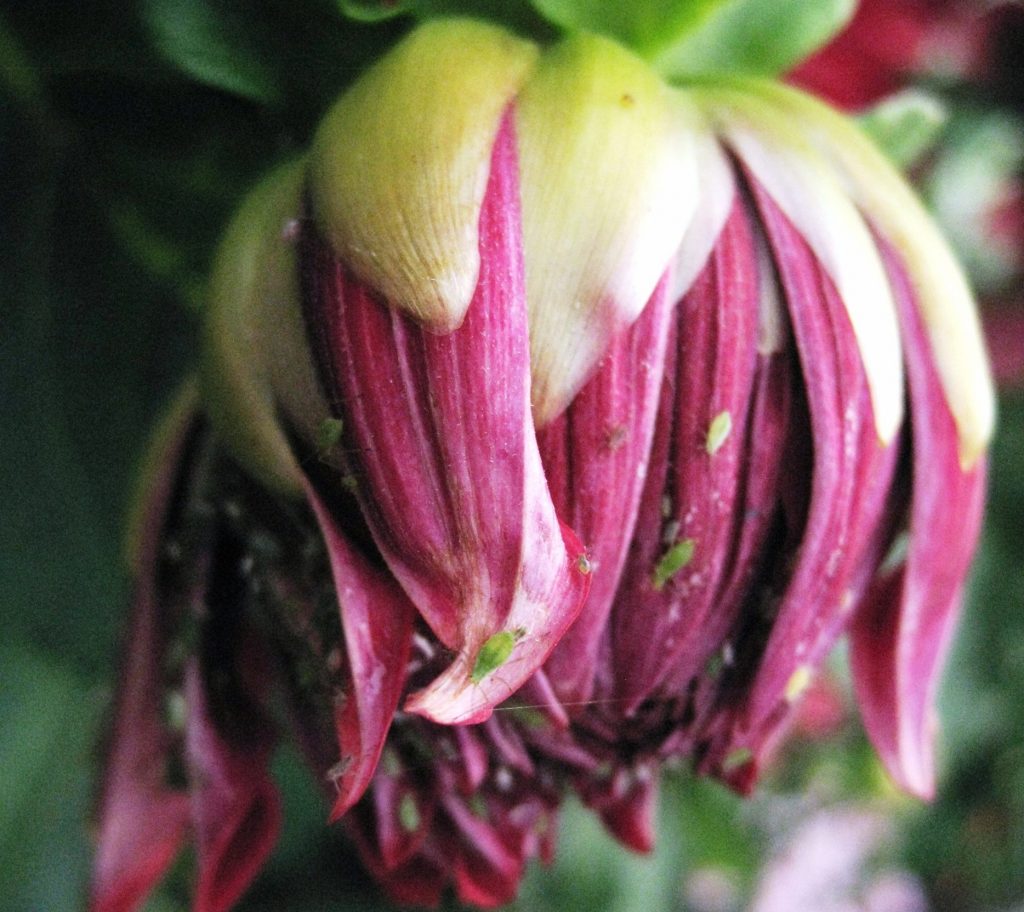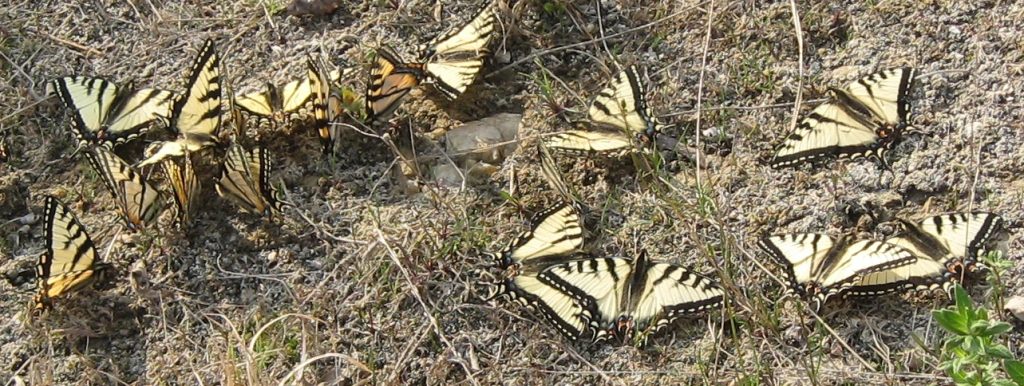What do you do when you see four-, six-, eight- or 100-legged creatures crawling about in your garden? Is your first instinct to smash them?
Next time, before you do, ask yourself, “Is it a friend or foe?’ A variety of creatures, big and small, play beneficial roles in your garden, from pollinating plants to preying on pests to cycling nutrients. Some, if not beneficial, are harmless. Then there are those that do in fact damage your garden–the pests. There even are some that are sometimes beneficial and sometimes a pest, like robins. They eat insects, but they also eat berries.
A variety of creatures, big and small, play beneficial roles in your garden, from pollinating plants to preying on pests to cycling nutrients. Some, if not beneficial, are harmless. Then there are those that do in fact damage your garden–the pests. There even are some that are sometimes beneficial and sometimes a pest, like robins. They eat insects, but they also eat berries.

Aphids attack this budding dahlia.
How do you know who is who? For the most common beneficial insects and spiders, the University of Alaska Fairbanks Cooperative Extension Service published a handy identification guide for identifying beneficial insects as well as numerous handouts on common pests and diseases. You can also just ask Extension by sending in a photo of the creature in question. Keep in mind that some insects, such as ladybugs, look very different in the nymph stage compared to the adult stage, so you should learn to recognize them at both stages.
What do they do that is so helpful to your garden? Butterflies, bees, beetles and flies pollinate plants. Have you read my post I wrote about strawberries? Without pollinators, you wouldn’t get any strawberries, either. The Georgeson Botanical Garden in Fairbanks compiled a handy list of who pollinates which plants and when it happens. There also are some beneficials who are busy below ground decomposing, cycling nutrients, aerating the soil and controlling pests in the soil.
There also are some beneficials who are busy below ground decomposing, cycling nutrients, aerating the soil and controlling pests in the soil.
Finally, some beneficial organisms prey on garden pests either directly by parasitism or through competition.
Now that you know how important beneficial organisms are in your garden ecosystem, what can you do to make sure your friends find a home in your garden?
Minimize your use of broad-spectrum pesticides. While they do kill unwanted pests, they also kill beneficial organisms.
Till only when necessary. Excessive tilling destroys beneficial organisms that live in the soil.
Plant sunflowers, plants that have bolted (especially in the broccoli family), cover crops and other flowering plants. They provide food for a range of beneficials.
Establish permanent plantings in or around your garden, including perennial flowers, shrubs and especially native ones. These permanent plantings provide shelter for an array of beneficial organisms. Here is a guide to landscaping for wildlife in Alaska. Here is a detailed guide to which plants provide ideal habitat for which beneficial organisms. Finally, the Xerces Society, dedicating to invertebrate conservation, created this illustrated guide to providing habitat for beneficials in your garden.
While you’re making beneficial organisms cozy in your garden, it’s true that pests may find it comfortable as well. You’ll have to tolerate some level of pests in your garden. When you do need to control pests, try to minimize the negative impact it may have on beneficial organisms.
When you encourage a diversity of creatures in your garden, you will benefit from the many services the beneficials provide and you won’t experience extremely high pest levels that you might have otherwise.
Previously published in the Fairbanks Daily Newsminer July 29, 2015